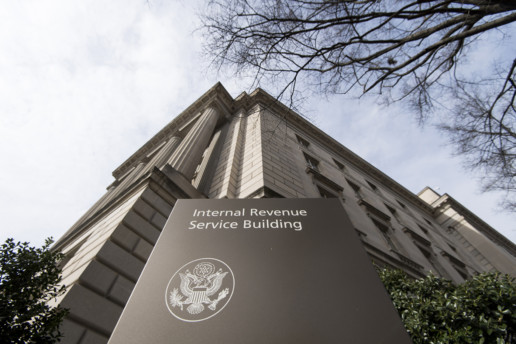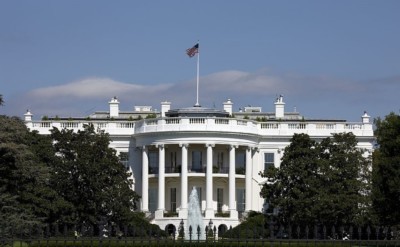A 401(k) plan administrators’ guide to the recent IRS revenue ruling
The IRS recently released a new revenue ruling that provides 401(k) plan administrators with helpful guidance on reporting and withholding from 401(k) plan distributions. Read the blog post below to learn more about this new ruling.
The IRS recently issued revenue ruling 2019-19. The revenue ruling provides 401(k) plan administrators with helpful guidance on how to report and withhold from 401(k) plan distributions when a plan participant actually receives the distribution but for some reason, does not cash the check.
Unfortunately, this new guidance does not provide answers to the complex issues that 401(k) plan administrators face when the plan must make a distribution, but the plan participant is missing.
Let’s hope revenue ruling 2019-19 is just the first in a series of much-needed guidance from the IRS and the Department of Labor about how 401(k) plan administrators should handle the increasingly common administrative issues related to uncashed checks and missing plan participants.
There are many situations in which a 401(k) plan must make a distribution to a plan participant. For example, plans must distribute small benefit cash outs (e.g., account balances that are $1,000 or less) or required minimum distributions to plan participants who reach age 70 and a half. This may come as a surprise, but plan participants fail to actually cash these checks with some regularity.
In the ruling, the IRS confirmed that 401(k) plan administrators should withhold taxes on a 401(k) plan distribution and report the distribution on a Form 1099-R in the year the check is distributed to the participant, even if the participant does not cash the check until a later year.
Similarly, the participant needs to include the plan distribution as taxable income in the year in which the plan makes the distribution even if the participant fails to cash the check until a later year. While this guidance is not surprising, it does provide clarity to 401(k) plan administrators as to how they must withhold and report normal course and required plan distributions. In particular, 401(k) plan administrators should not reverse the tax withholding or reporting of the distribution when the participant receives the distribution and simply does not cash the check until a later year.
Unfortunately, this new IRS guidance has limited use because the ruling uses an example that specifically concedes that the plan participant actually received the plan distribution check, but simply failed to cash it. What should 401(k) plan administrators do when the participant may not have received the distribution check at all (e.g., a check is returned for an invalid address) or the plan itself does not have current contact information for the participant?
Retirement plan administrators have an ERISA fiduciary obligation to implement a diligent and prudent process to find missing plan participants and to take additional steps to make sure participants actually receive plan distributions. Uncashed 401(k) plan distribution checks are still retirement plan assets which means the 401(k) plan administrator is still subject to ERISA fiduciary standards of care, prudence and diligence related to those amounts. As a result, the IRS and DOL have increased their focus on uncashed checks and missing participants in retirement plan audits.
Plan administrators would be well-served by establishing and implementing a consistent process to stay on top of any missing plan participants or uncashed checks and taking steps to locate those participants and properly address uncashed checks. Plan administrators should also carefully document the steps that they take in this regard. The IRS and DOL have currently provided limited guidance on the steps a 401(k) plan administrator can take to locate missing participants, but more guidance is needed — let’s hope revenue ruling 2019-19 is just the beginning.
This article originally appeared on the Foley & Lardner website. The information in this legal alert is for educational purposes only and should not be taken as specific legal advice.
SOURCE: Dreyfus Bardunias, K. (6 September 2019) "A 401(k) plan administrators’ guide to the recent IRS revenue ruling" (Web Blog Post). Retrieved from https://www.benefitnews.com/opinion/401k-administrators-guide-to-the-irs-revenue-ruling-2019-19
Illnesses, Deaths Tied to Vaping
New reports are showing that the use of electronic cigarettes (vaping) is believed to be responsible for five deaths and 450 severe lung injuries. Continue reading this article from SHRM to learn more.
The use of electronic cigarettes, also known as vaping, is believed to be responsible for five deaths and 450 severe lung injuries in what appears to be a nationwide epidemic, according to new reports.
E-cigarettes are battery-operated and produce vapor that simulates smoking. They can resemble regular cigarettes, cigars, pipes, pens, USB sticks and other everyday items. They do not burn tobacco, but the device heats a liquid that usually contains nicotine, flavorings and other chemicals.
While most employers ban smoking in the workplace, their policies don't always extend to e-cigarette products. However, a Centers for Disease Control and Prevention (CDC) health alert on Aug. 30 warned that severe pulmonary disease is associated with using e-cigarette products. The agency, which is part of the U.S. Department of Health and Human Services, launched a multistate investigation into the lung illnesses on Aug. 1.
"Although more investigation is needed to determine the vaping agent or agents responsible," wrote Dr. David C. Christiani of the Harvard School of Medicine, "there is clearly an epidemic that begs for an urgent response." He shared his comments in the Sept. 6 issue of the New England Journal of Medicine, along with the preliminary report "Pulmonary Illness Related to E-Cigarette Use in Illinois and Wisconsin."
The CDC is working with the U.S. Food and Drug Administration, states and other public health partners and clinicians to determine what is sickening users, and in some cases resulting in fatalities. On Friday, it suggested that people refrain from using e-cigarette products during its investigation.
SHRM Online has collected the following articles about this topic from its archives and other trusted sources.
5 Deaths Linked to Vaping. Officials Are Urging Consumers to Stop. (Chicago Tribune)
How Are You Handling Vaping at Work? (SHRM Online)
More States Ban Vaping, E-Cigarette Use in Workplaces (Bloomberg)
Florida Adds Vaping to Regulated Indoor Smoking (SHRM Online)
SOURCE: Gurchiek, K. (6 September 2019) "Illnesses, Deaths Tied to Vaping" (Web Blog Post). Retrieved from https://www.shrm.org/hr-today/news/hr-news/Pages/Illnesses-Deaths-Tied-to-Vaping-.aspx
Fresh Brew with Karie Waddell Gallo
Welcome to our monthly segment, Fresh Brew, where we will be exploring the delicious coffees, teas, and snacks of some of our employees! You can look forward to our Fresh Brew blog post on the first Friday of every month.
“Knowing the culture of your client’s employees is key to providing the perfect benefit line up.”
Karie Waddell Gallo is the COO and Account Executive at Saxon Financial Services.
Karie joined Saxon Financial Services in April of 2003. She is now the Chief Operating Officer and Account Executive for Group Benefits Clients.
Karie works with Client Contacts on renewal and new business implementation. She enjoys helping customers and prides herself on the understanding of their needs and the discovery of knowledge along the way.


Vanilla Latte
“So simple. So delicious.”
Favorite place?
“I am a Starbuck’s Junkie!”
Creating High-Performance Teams
Can having a plan for more than the hiring process help both future employees and current? Having a high-performance team is essential in creating strong work environments. Continue reading this blog post from SHRM to learn more about creating high-performance teams at your organization.
Every organization needs its teams to deliver a high level of performance to succeed in today’s business environment. Author Omar L. Harris offers clear guidance on how to hire for, support, and guide high-performance teams.
What are some tips to hiring employees to fit into high-performing teams?
My top tip for hiring employees to fit into high-performing teams is to understand the key mix of attributes that the high-performing team members possess. Look beyond IQ and pedigree and focus on more attitudinal attributes such as work ethic, passion, solution-orientation, and the maturity to productively manage disappointment and conflict.
What are the stages of forming a high-performance team?
The stages are:
- hiring the right W.H.O.M. (work ethic, heart, optimism, maturity),
- effectively onboarding each team member by getting to know them on a deeper level,
- helping them accelerate their learning curve,
- setting clear expectations of their roles,
- building trust between the team members by encouraging vulnerability and open dialogue, and
- crafting a clear mission with superordinate goals that bring the team together to achieve something that no one could achieve on their own.
What are the hallmarks of a high-performing team?
One hallmark of a high-performing team is a level of professional intimacy among the team members, meaning they know each other well both as professionals and as people and enjoy working together. A level of transparency and passion for the work being done that leads to productive conflicts resulting in better decision-making. An adherence to norms that define how every member works together. And an absolute focus on delivering results. The characteristics that make this happen are simply people who work hard, have shared passion, search for solutions with a sense of urgency, and have the maturity to overcome inevitable conflicts and disappointments.
How can senior leadership create a culture of strong teams?
Focus on creating a team of managers who love achieving results by putting their people in their strengths zones and developing their capacity and talents.
Do high-performance teams vary across companies, industries, or geographies?
I've had the opportunity to lead teams across the world in the U.S., Middle East, Asia, and Latin America, and people are the same all around the world. People want to be valued. They want to believe in the mission of their organization. They want to have opportunities to develop. So leaders who want to create high-performance teams anywhere in the world need to be able to tap into these commonalities and work tirelessly to create the condition for the success of their people.
How can leaders help struggling teams?
First understand the source of the struggle. Most issues occur during the team formation and team storming stages. And then level-up their own leadership skills to respond to the challenges of the moment. The best advice I can give is to look to deepen the understanding and connection with each member of the team and by improving each members focus and alignment, you improve the team dynamic by default. Lastly, recognize if the ingredients are off and make the necessary decisions to move poisonous people out of the environment.
What are other things to remember about managing high-performance teams?
Performance is relative and the goal posts must be continually stretched to keep everyone engaged. Also, plan for succession so as people on the team achieve results and receive greater opportunities, the next generation of team members are ready to step up and continue on the mission.
Employers shouldn’t fear expansion of Medicare
A new survey from the National Business Group on Health found that only 23 percent of large employers believe Medicare eligibility should drop to age 50. Read this article from Employee Benefits Advisor to learn more about the potential expansion of Medicare.
Like a significant chunk of American voters, a majority of large employers want to expand Medicare. Just not too much.
A new survey of 147 large employers from the National Business Group on Health found that 55% of them support a Medicare expansion that’s limited to older Americans. Only 23% think eligibility should drop to age 50, however, and 45% don’t think it should expand at all. A majority believe that a broader “Medicare for All” plan would increase health costs.
The same survey also highlights why employers should consider coming around on health reform that reduces their role in the system. The growth in health costs has outpaced inflation and wage growth for years, and the surveyed businesses expect it to rise 5% to $15,375 for each employee next year.
About 70% of those costs will fall on the companies, which plan to try everything from boosting virtual health services to investing in health concierges to rein them in, according to the survey.
History suggests that their best efforts might not amount to much.
Employer-sponsored insurance is America’s single largest source of health coverage. That’s mostly true because the IRS exempted employer health benefits from taxes in 1943, a move that created the federal government’s single biggest tax expenditure. Large companies derive some benefit from the current system because they can provide a significant tax-free benefit that helps them compete for talent and pay people less. But it comes with significant drawbacks. Employers have to devote substantial resources to providing healthcare and controlling costs. Many of them have no particular expertise or advantage in doing so.
The results are mixed. Yes, individuals with private insurance are generally satisfied with the quality of their coverage. They’re not nearly as happy about the cost as deductibles rise. The U.S. pays more than any other developed country for healthcare and medicines and receives worse results on a variety of metrics.
Employers pay particularly high prices and spend heavily on plans that have higher overhead than public alternatives. A recent RAND study found that employer-sponsored plans paid hospitals at 241% of Medicare rates in 2017. Employers are already effectively subsidizing public programs, not to mention the profitability of insurers, health care providers and drugmakers.
It’s not entirely their fault. The American system inherently fragments negotiating power, which gives providers a significant advantage and makes it difficult for even the largest employers to get a good deal. Turning a larger piece of healthcare over to the government would free companies to focus more time and resources on their actual business instead of on navigating the world’s most expensive and convoluted healthcare market.
Big businesses most likely fear big Medicare expansion in large part because it would lead to a significant tax increase. But looking at any tax increase as an enemy is a mistake. Those taxes represent a trade-off; they would replace some or all of the billions of dollars that employers are currently spending on care. Depending on what taxes are imposed and whether the public plan is able to control costs better than the current system — and it could hardly do worse — many employers could come out ahead.
There are a lot of unknowns when it comes to Medicare for All and plans that move the country in that direction. Employers are right to be skeptical until they know more, but the results could well shake out in their favor, and they shouldn’t be so quick to discount the approach.
SOURCE: Nisen, M. (15 August 2019)"Employers shouldn’t fear expansion of Medicare" (Web Blog Post). Retrieved from https://www.employeebenefitadviser.com/articles/employers-shouldnt-fear-expansion-of-medicare
15 states where $1 million in retirement savings will last the longest
How much do you have saved for retirement? According to GOBankingRates data, employees who have $1 million in retirement savings can make it last for more than 20 years in Mississippi, Arkansas, Oklahoma and Missouri. In this article, Paola Peralta writes on the importance of understanding what better retirement choices can do for your future.
Employees with $1 million in retirement savings can make it stretch for more than 20 years in Mississippi, Arkansas, Oklahoma and Missouri, according to GOBankingRates data in an article from Business Insider. Retirees in New Mexico, Tennessee, Michigan and Kansas can also live on a similar amount of savings, data shows. Retirees with $1 million can expect their savings to last in average span of 19 years, GOBankingRates estimates.
Less choice could mean better retirement outcomes
The amount of income that seniors can replace in retirement is a good measure to determine whether there is a looming retirement crisis in the U.S., according to retirement expert Mark Miller in this article from Morningstar. However, it is hard to make generalizations, he explains. “I think it varies tremendously, depending which demographic group you’re looking at, you can do it generationally or otherwise,” Miller says.
Retirement requires a shift in thinking
As retirees needs change, they should be ready to adjust their mindset and modify their investment strategies, an expert in Kiplinger writes. Retirees should focus more on preservation and distribution after the accumulation phase, the expert writes. “In retirement, it’s important to think of your savings as income rather than a lump sum. It’s not all about achieving maximum return on investment anymore," the expert says. "It’s about how you can get the maximum return from your portfolio and into your pocket."
Employees nearing retirement? 12 features to look for in their next home
Seniors who intend to move to a new home in retirement should consider a property that offers low yard maintenance, a single-story open floor plan and easy access to loved ones and essential amenities, according to a Forbes article. They should ensure that the new house is cheap to maintain and won’t trigger a hefty tax bill, says one expert. “If those costs are low, it can be a great investment.”
SOURCE: Peralta, P. (15 August, 2019) "15 states where $1M in retirement savings lasts the longest"(Web Blog Post). Retrieved from https://www.employeebenefitadviser.com/news/states-where-retirement-savings-will-last-the-longest
The case for expanding wellness beyond the physical
Can addressing mental health, financial wellness and substance abuse in the workplace help employees feel fulfilled both personally and professionally? Newly released data shows that employees who have access to wellness programs that address most or all of the five aspects of well-being are more likely to say their job performance is excellent. Read this blog post to learn more about expanding wellness programs.
Client's wellness programs that only focus on physical fitness may need to rethink their approach.
By expanding wellness offerings to include programs that support workers’ mental and financial wellness, employer clients can increase the overall wellbeing of their workforce. Newly released data from Optum and the National Business Group on Health shows that employees who are offered programs that address most or all of the five aspects of wellbeing — physical, mental, financial, social and community — are significantly more likely to say their job performance is excellent, have a positive impression of their employer, and recommend their company as a place to work.
Over the last decade, workplace wellness initiatives have evolved beyond health risk assessments, physical fitness and nutrition programs. Many programs now include resources to address mental health, financial wellness and substance abuse.
“[Employers] must commit to looking beyond clinical health outcomes,” says Chuck Gillespie, CEO of the National Wellness Institute, speaking at a webcast from the International Foundation of Employee Benefit Plans. “You want employees to be fulfilled both personally and professionally.”
Even though some clients address financial, social and community health, most still focus on physical and mental health.
However, there are benefit trends that address wellness beyond physical fitness. The emergence of financial wellness benefits — such as early pay access, student loan assistance and retirement saving plans — may help employees feel less stressed and more financially secure, which has shown to improve overall health.
But having a good wellness program in place isn’t enough — employers also have to make sure that the offerings are inclusive and personalized, and that the programs have successful participation and engagement rates.
“These programs need to be adapted to who you are,” Gillespie says. “Customization has to be a key factor of what you’re looking at, because everybody is not going to fit inside your box.”
Effective wellness programs use both health and wellness data points and best practices, while keeping an eye on developing trends. Multi-dimensional wellness — looking at aspects such as social and community — can help companies understand the needs of their employees better.
“Employers need to better recognize personal choices, and if the employees are in an environment where they are functioning optimally,” Gillespie says. “Smokers hang out with smokers; the cultural foods that you eat with family may not be nutritious; is there social isolation; do you contribute to your community. [Most benefits] are work-oriented, but for most people, their life is their home life. It’s important to look at the degrees of which you feel positive and enthusiastic about your work and life.”
SOURCE: Nedlund, E. (15 August 2019) "The case for expanding wellness beyond the physical" (Web Blog Post). Retrieved from https://www.employeebenefitadviser.com/news/the-case-for-expanding-wellness-beyond-the-physical
Turnover Contagion: Are Your Employees Vulnerable?
How are you engaging employees? With employee retention top-of-mind for organizations wanting to stay competitive in today's market, employers need to find ways to ensure employees are engaged and happy at work. Continue reading this blog post from SHRM to learn more.
Employee retention is top-of-mind for any organization looking to stay competitive in today’s market. Despite swaths of technological advances, in our knowledge-based, global economy an organization’s key assets are still its employees. Considering this, substantial amounts of research have been published about potential predictors and causes of employee turnover. Most of this research can be classified into two categories: individual-level explanations (e.g., job satisfaction, person-job fit, etc.) or external and organizational-level explanations (e.g., unemployment rates, job demand, etc.). However, only having these two types of explanations ignores team-level and the inherent social aspects of turnover. Specifically, do the behaviors and attitudes of coworker's influence employee’s intentions to quit their jobs?
Quitting is infectious.
People regularly “catch” the feelings of those they work with, particularly in group settings. We’ve all been around someone at work whose sour mood set the tone for the day; their negative emotions dampened the mood of everyone else around them. Employee mood isn’t all that is affected. Surprisingly, the emotions of others influence judgment and business decisions – and this all typically happens without anyone realizing.
In a study on the spread of emotions, groups were created to judge how to best allocate funds in hiring decisions. A confederate (actor) was planted in each group and instructed to display one of four emotions: cheerful enthusiasm, serene warmth, hostile irritability, or depressed sluggishness. Not only did the emotions of the confederates spread to each member of the group but each group’s resulting judgments and behaviors were affected. In groups with a pleasant confederate, members displayed more cooperation, less conflict, and allocated funds more equitably than in groups with unpleasant confederate emotions.
In a related study, researchers looked into the contagion of social contexts on job behaviors. As it turns out, evidence suggests an employee’s decisions to voluntarily leave an organization is influenced by the attitudes and behaviors of their coworkers. They found evidence suggesting job embeddedness (how well employees feel they fit in with their job and the community) and job search behaviors of coworkers predict individual voluntary turnover. An employee’s job embeddedness is the relative strength of their organizational network; weaker bonds or links are easier to break. That is, if a coworker is low on organizational connection (e.g., fewer and weaker relationships with other organizational members) or engages in noticeable job-seeking behaviors (e.g., talking about an application or interview, expressing a desire to leave, quitting, etc.) their colleagues are more likely to choose to exit the organization. As can be imagined, this relationship is amplified when a coworker has both low job embeddedness and visible job-searching behaviors.
People leave organizations all the time. There are several reasons why employees decide to leave organizations - whether it be for personal (relocation of family member), professional (more pay, promotion, career change), or organizational (job or organization redesign). In fact, healthy businesses want some amount of turnover. However, in the case of turnover contagion, your employees are leaving simply because their colleagues are leaving. When a group of employees leave an organization in rapid cycle, it may be due to the influence of their immediate peer group and this should be cause for concern as turnover contagion is likely occurring.
The interplay of social contexts within an organization along with individual and organizational-level predictors adds more to our understanding of the complexity of employee turnover decisions. This is just one piece of the pie – and an important one. Understandably, more research needs to be conducted until just how this phenomenon works is understood, however, based on the evidence, organizations and leaders shouldn’t wait to act.
For one, it’s a tight labor market and has been for some time now. Overall, many employees are looking and leaving. There has been a cultural shift among workers where they feel increasingly less loyalty than before and are even more likely to job hop. To add to this, unemployment is at an all-time low and job growth is climbing. Meaning there are more open jobs than there are workers to fill them. It’s an applicant’s market. These factors, coupled with the sheer cost of replacing skilled employees – speculated to be a whopping 1.5 to 2 times an employee’s salary – should give pause to leaders when they suspect employees have caught the turnover bug.
On the bright side, turnover contagion can be minimized, and companies stand to reap plenty of rewards through emotional contagion. Just like negative emotions create a spiral of negativity, so too can emotions with a more positive valence. For example, leaders can use the infectious qualities of emotions to spread feelings of happiness by expressing gratitude or complementing someone. In addition, increasing job embeddedness and strengthen the bonds your employees have by building more connection with their team, leaders, and other departments can go a long way to reducing turnover.
SOURCE: Ford, A. (13 August, 2019)"Turnover Contagion: Are Your Employees Vulnerable?"(Web Blog Post). Retrieved from https://blog.shrm.org/blog/turnover-contagion-are-your-employees-vulnerable
Cadillac Tax May Finally Be Running Out of Gas
The Cadillac tax - a 40 percent tax on the most generous employer-provided health insurance plans - may be about to change. The Cadillac tax was supposed to take effect in 2018 but has been delayed twice and recently, the House voted to repeal this tax entirely. Read this blog post to learn more about this potential change.
The politics of healthcare are changing. And one of the most controversial parts of the Affordable Care Act — the so-called Cadillac tax — may be about to change with it.
The Cadillac tax is a 40% tax on the most generous employer-provided health insurance plans — those that cost more than $11,200 for an individual policy or $30,150 for family coverage. It was supposed to take effect in 2018, but Congress has delayed it twice. And the House recently voted overwhelmingly — 419-6 — to repeal it entirely. A Senate companion bill has 61 co-sponsors — more than enough to ensure passage.
The tax was always an unpopular and controversial part of the 2010 health law because the expectation was that employers would cut benefits to avoid paying the tax. But ACA backers said it was necessary to help pay for the law’s nearly $1 trillion cost and help stem the use of what was seen as potentially unnecessary care. In the ensuing years, however, public opinion has shifted decisively, as premiums and out-of-pocket costs have soared. Now the biggest health issue is not how much the nation is spending on healthcare, but how much individuals are.
“Voters deeply care about healthcare still,” said Heather Meade, a spokeswoman for the Alliance to Fight the 40, a coalition of business, labor and patient advocacy groups urging repeal of the Cadillac tax. “But it is about their own personal cost and their ability to afford healthcare.”
Stan Dorn, a senior fellow at Families USA, recently wrote in the journal Health Affairs that the backers of the ACA thought the tax was necessary to sell the law to people concerned about its price tag and to cut back on overly generous benefits that could drive up health costs. But transitions in healthcare, such as the increasing use of high-deductible plans, make that argument less compelling, he said.
“Nowadays, few observers would argue that [employer-sponsored insurance] gives most workers and their families’ excessive coverage,” he wrote.
The possibility of the tax has been “casting a statutory shadow over 180 million Americans’ health plans, which we know, from HR administrators and employee reps in real life, has added pressure to shift coverage into higher-deductible plans, which falls on the backs of working Americans,” said Rep. Joe Courtney (D-Conn.).
Support or opposition to the Cadillac tax has never broken down cleanly along party lines. For example, economists from across the ideological spectrum supported its inclusion in the ACA, and many continue to endorse it.
“If people have insurance that pays for too much, they don’t have enough skin in the game. They may be too quick to seek professional medical care. They may too easily accede when physicians recommend superfluous tests and treatments,” wrote N. Gregory Mankiw, an economics adviser in the George W. Bush administration, and Lawrence Summers, an economic aide to President Barack Obama, in a 2015 column. “Such behavior can drive national health spending beyond what is necessary and desirable.”
At the same time, however, the tax has been bitterly opposed by organized labor, a key constituency for Democrats. “Many unions have been unable to bargain for higher wages, but they have been taking more generous health benefits instead for years,” said Robert Blendon, a professor at the Harvard T.H. Chan School of Public Health who studies health and public opinion.
Now, unions say, those benefits are disappearing, with premiums, deductibles and other cost sharing rising as employers scramble to stay under the threshold for the impending tax. “Employers are using the tax as justification to shift more costs to employees, raising costs for workers and their families,” said a letter to members of Congress from the Service Employees International Union.
Deductibles have been rising for a number of reasons, the possibility of the tax among them. According to a 2018 survey by the federal government’s National Center for Health Statistics, nearly half of Americans under age 65 (47%) had high-deductible health plans. Those are plans that have deductibles of at least $1,350 for individual coverage or $2,700 for family coverage.
It’s not yet clear if the Senate will take up the House-passed bill, or one like it.
The senators leading the charge in that chamber — Mike Rounds (R-S.D.) and Martin Heinrich (D-N.M.) — have already written to Senate Majority Leader Mitch McConnell to urge him to bring the bill to the floor following the House’s overwhelming vote.
“At a time when healthcare expenses continue to go up, and Congress remains divided on many issues, the repeal of the Cadillac tax is something that has true bipartisan support,” the letter said.
Still, there is opposition. A letter to the Senate on July 29 from economists and other health experts argued that the tax “will help curtail the growth of private health insurance premiums by encouraging employers to limit the costs of plans to the tax-free amount.” The letter also pointed out that repealing the tax “would add directly to the federal budget deficit, an estimated $197 billion over the next decade, according to the Joint Committee on Taxation.”
Still, if McConnell does bring the bill up, there is little doubt it would pass, despite support for the tax from economists and budget watchdogs.
“When employers and employees agree in lockstep that they hate it, there are not enough economists out there to outvote them,” said former Senate GOP aide Rodney Whitlock, now a healthcare consultant.
Harvard professor Blendon agrees. “Voters are saying, ‘We want you to lower our health costs,’” he said. The Cadillac tax, at least for those affected by it, would do the opposite.
SOURCE: Rovner, J. ( 19 August, 2019) "Cadillac tax may finally be running out of gas" (Web Blog Post). Retrieved from https://www.employeebenefitadviser.com/articles/obamacare-excise-tax-may-be-at-an-end
Older Workers Are a Valuable Talent Pool
Currently, Americans 55 and older make up less than a quarter of the nation's labor force, according to AARP. While many HR leaders have been focused on finding out how to meet the different expectations and needs of Millennials, they also need to be aware of the bigger demographic challenge ahead - the role of people over 55. Read this blog post to learn more.
Over the last decade, most HR leaders have been obsessed by the role of millennials at work and figuring out how to meet the different expectations and needs of these young workers.
Certainly, this has been important work. But, leaders need to be aware of a much bigger demographic challenge ahead: the role of people over the age of 55.
The U.S. Bureau of Labor Statistics projects that in the next 10 years, the fastest-growing segments of the workforce will be for employees over 65. According to AARP, Americans 55 and older make up slightly less than a quarter of the nation’s labor force, but they filled almost half (49 percent) of the 2.9 million jobs gained in 2018—the biggest share of any age group.
This trend will continue. We are living longer and having fewer children. The fertility rates in the U.S., U.K., Germany, Japan, and almost every other developed country are below replacement. As a result, populations—and our workforces—are going to get older.
Obviously, this has an impact on public policy, immigration, and healthcare investments. But the more interesting aspect for those of us in HR is the huge impact this will have on work.
Attitudes About Age
How do most employers feel about older people? They aren’t that thrilled to have them around. While older employees may be wiser and more reliable, they usually make more money than younger workers. Many employers believe older workers can’t keep up with today’s always-on digital workplace.
A few years ago, we asked employers whether age was a competitive advantage or competitive disadvantage in their company. Almost 60 percent of respondents said that age was a disadvantage. In other words, when a young employee competes with an older employee for a job, the young person wins.
This discriminatory perception was summed up perfectly by Mark Zuckerberg in 2007 when he said in an interview, “Younger people are just smarter.”
Forced Transitions
I’ve seen this in my own personal life. Many of my friends from college (we’re all in our early 60s) are starting to think about retiring, primarily because they’ve been forced out of their companies. Most of us will live well into our 80s, 90s, or longer, and as we age, work becomes one of the most gratifying things we do. But employers just don’t see it this way.
According to a recent analysis by the Urban Institute and ProPublica, more than half of workers over 50 lose longtime jobs before they are ready to retire. Of those, 9 out of 10 never recover their previous earning power. Why? Employers simply do not want them back.
Age Discrimination
Companies are now being sued for age discrimination. Recruiters have been caught saying things like “you’re too old for this job” or “we only hire people with less than seven years of experience.” Even Facebook has been forced to remove age as a criterion for job placements in its online advertisements.
The above are examples of explicit discrimination. However, in most companies, age discrimination is much more subtle. Older people have higher salaries, so they are just passed over for many positions.
New Ideas for Older Workers
But change is ahead. Not only does age discrimination fly in the face of most diversity and inclusion programs, but the reality is that employers really need older workers because of record unemployment rates and extreme talent shortages.
“Re-careering” programs—in which employers invite retirees back to work, give them training and new skills, and let them work part-time—are cropping up in companies such as Boeing, Bank of America, and Apple. I encourage all employers to invest this way.
Business leaders also need to keep in mind that baby boomers are the biggest buying population in the world and has as much disposable income as the rest of the population combined. These consumers want to do business with organizations that respect older individuals and don’t view age as a negative.
Think about your company’s attitudes about age. Older workers are often more stable, they understand how to work in teams, and they are likely to be more loyal over time. Generational diversity in workforces is also reflective of good corporate citizenship.
Now is the time for HR leaders to work to actively eliminate age discrimination in their workforces and view generational diversity as a valuable goal.
SOURCE: Bersin, J. ( 25 July 2019) "Older Workers Are a Valuable Talent Pool" (Web Blog Post). Retrieved from https://blog.hrps.org/blogpost/Older-Workers-Are-a-Valuable-Talent-Pool














